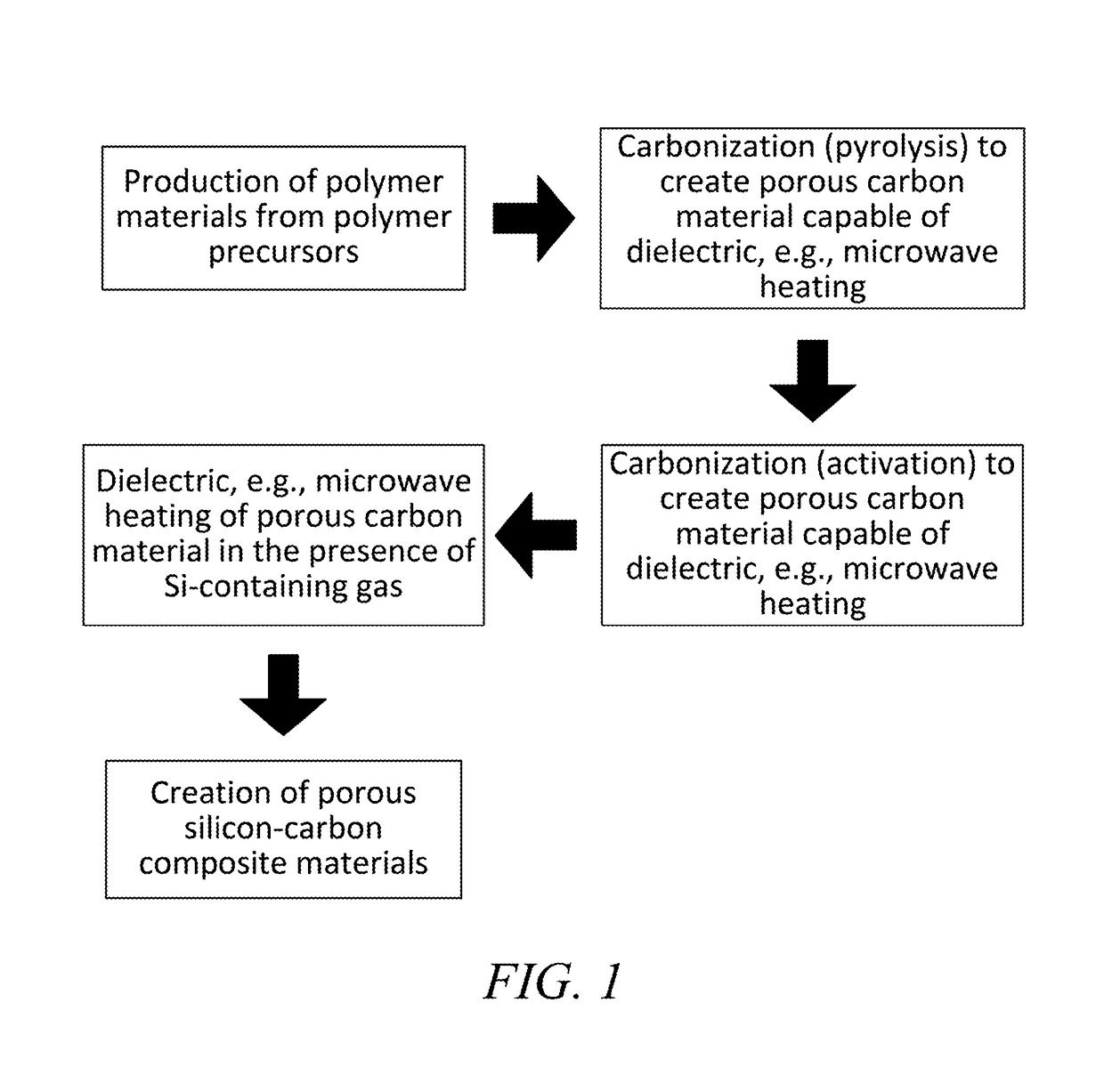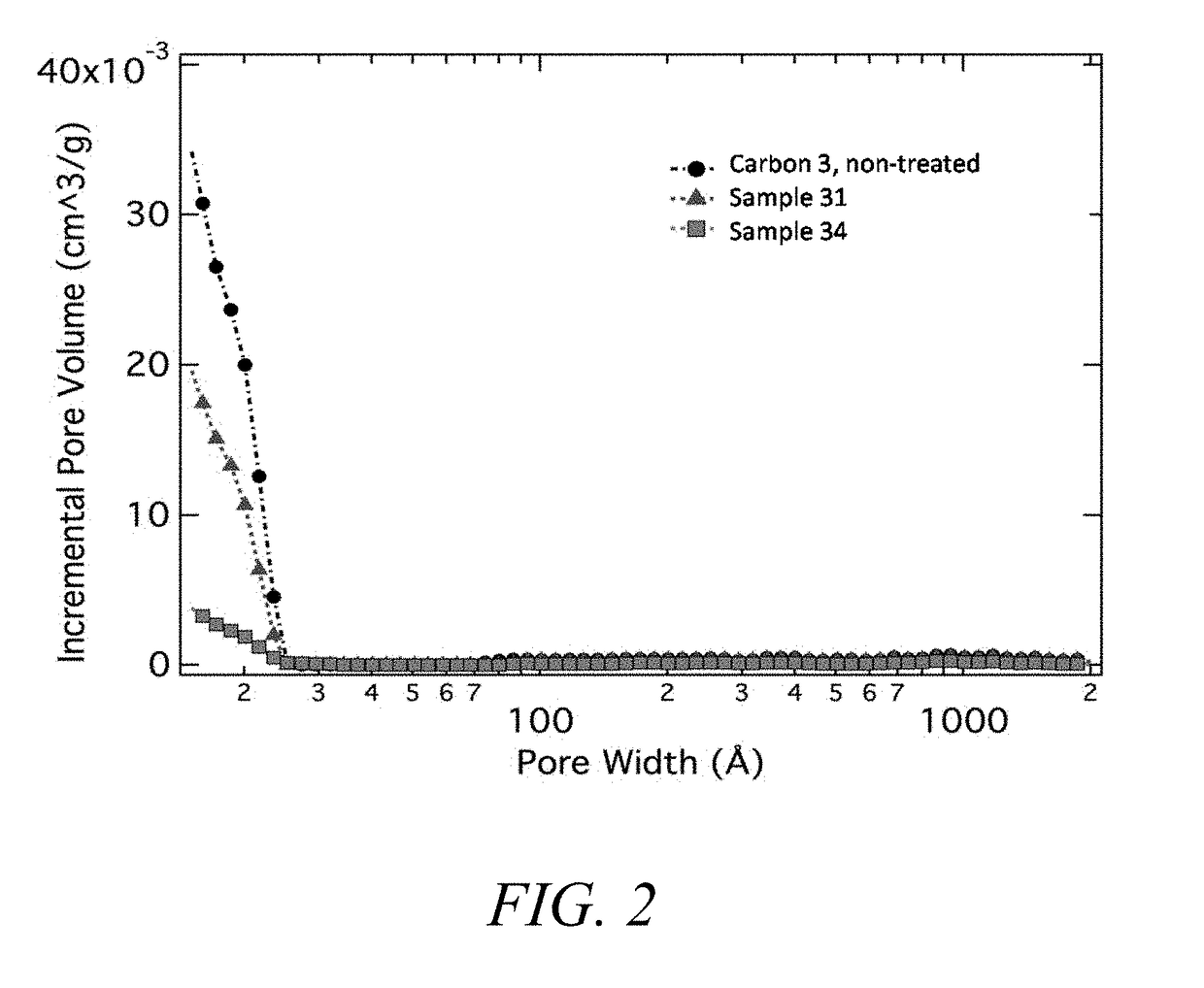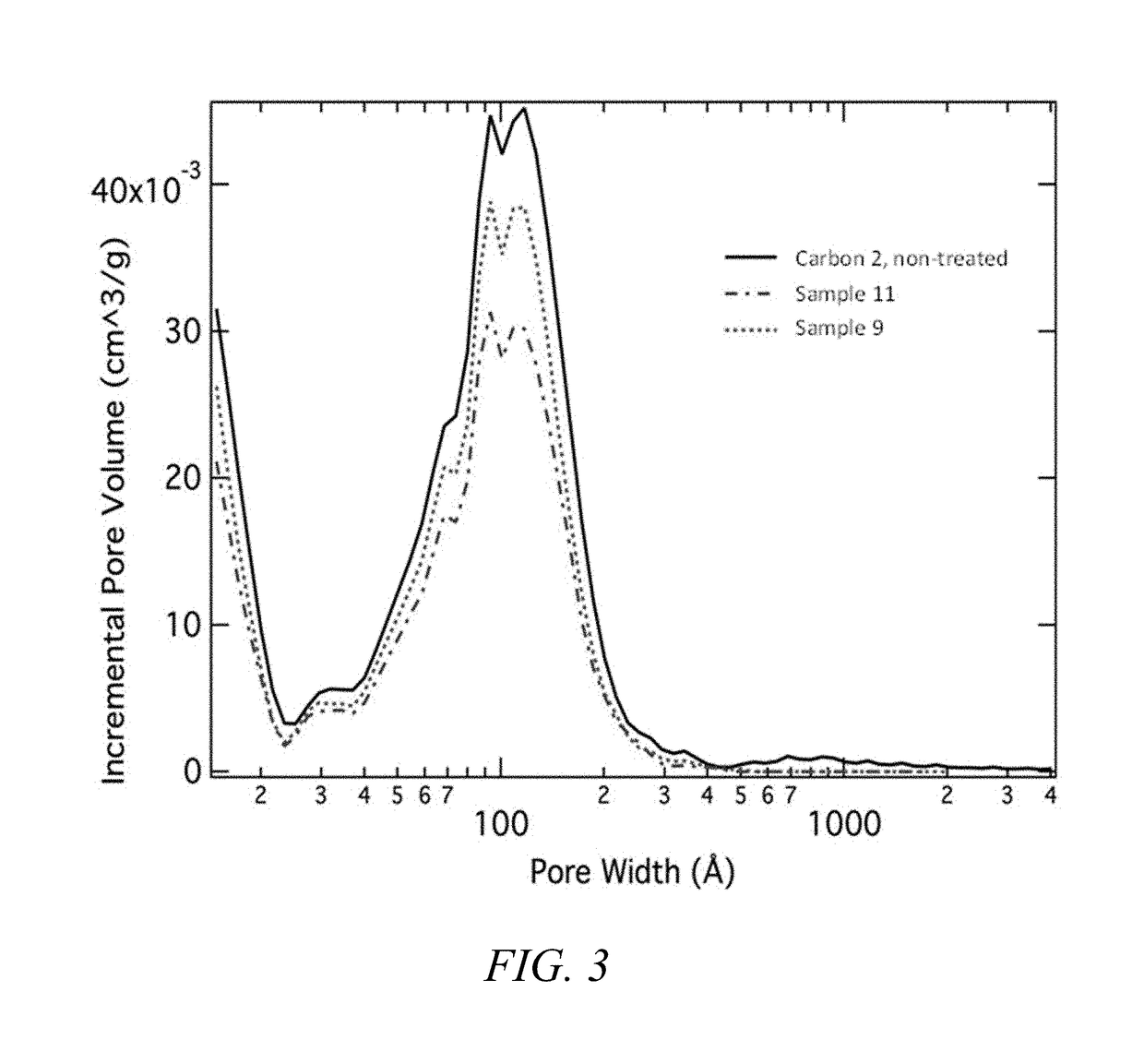Materials with extremely durable intercalation of lithium and manufacturing methods thereof
a technology of lithium and intercalation, which is applied in the direction of batteries, ceramics, cell components, etc., can solve the problems of low power performance and limited capacity of graphitic anodes, insufficient current lead acid automobile batteries for next-generation all-electric and hybrid electric vehicles, and fundamentally limited materials, etc., to achieve convenient scalable, improve process, and reduce the effect of cos
- Summary
- Abstract
- Description
- Claims
- Application Information
AI Technical Summary
Benefits of technology
Problems solved by technology
Method used
Image
Examples
example 1
Performance Model of Novel Composite Materials
[0407]A full cell model was developed to simulate the approximate size and energy of an 18650-type cell. LCO was chosen as the default cathode. The model accounts for material properties (density, packing, volume expansion), electrochemical performance characteristics (operating voltage, capacity, irreversible capacity), and cell level changes (required electrolyte, void volume). Table 2 compares the cell level properties from a commercially available cell and the output from the model. Similar values are calculated using the model, providing confidence in the model's ability to represent system level changes.
[0408]
TABLE 2Validation of performance model for a commercial cell.Standard CommercialComponentCellModel PredictionCell typeStacked Pouch CellStacked Pouch CellAnodeUnknownGraphiteCathodeUnknownLCOCell capacity3.28 Ah3.55 Ah (calculated)Operating Voltage3.7 V3.7 V (calculated)Cell energy199 Wh / kg174 Wh / kg435 Wh / L(calculated)437 Wh / L...
example 2
Examples of Porous Carbon Scaffold Materials
[0411]The variety of various porous carbon scaffold materials were obtained for study. A listing of the physicochemical attributes of the carbon is listed in Table 4.
[0412]Carbon 1 was a commercial carbon; in addition to the characteristics reported in Table 2, the Dv,100 was 11.62 microns, the Dv,10 was 0.6 micron, tap density was 0.27 g / cm3, the pH was 5.3, the ash content was 0.016%, and the sum all impurities detected by PIXE was as follows: silicon=48.680 ppm, calcium=12.910 ppm, iron=22.830 ppm, nickel=3.604 ppm, chromium=5.521.
[0413]Carbon 2 was a commercial carbon; in addition to the characteristics reported in Table 1, the Dv,100 was 18.662 microns, the Dv,10 was 1.2 micron, the span for particle size was 1.194, the uniformity for particle size distribution was 0.367, the tap density was 0.2347 g / cm3, the pH was 6.709, the ash content was 0.005%, and the sum all impurities detected by PIXE was as follows: calcium=20.5 ppm, iron=4....
example 3
Production of Various Composite Materials Via Silicon Deposition on Porous Silicon Scaffold
[0426]A variety of different composite materials were produced according to current disclosure, in this example, the silicon was embedded within a porous carbon scaffold via a chemical vapor deposition technique employing silane gas, as generally described herein. For this specific example, samples were processed in a tube furnace with 2 mol % silane gas flow mixed with nitrogen gas, and held for various times and temperatures as noted. A summary of sample processing is presented in Table 5. The final loading of silicon in the silicon carbon composite can be determined as known in the art, for example from the weight loss observed employing thermal gravimetric analysis (TGA), a technique known in the art.
[0427]
TABLE 5Summary of composite samples produced according to Example 3.CompositePorousSet Temp.Flow ratePressureSilane dwellTotal wtwt % siliconSample #Carbon(° C.)(sccm)(Torr)time (min)% g...
PUM
| Property | Measurement | Unit |
|---|---|---|
| skeletal density | aaaaa | aaaaa |
| skeletal density | aaaaa | aaaaa |
| skeletal density | aaaaa | aaaaa |
Abstract
Description
Claims
Application Information
 Login to View More
Login to View More - R&D
- Intellectual Property
- Life Sciences
- Materials
- Tech Scout
- Unparalleled Data Quality
- Higher Quality Content
- 60% Fewer Hallucinations
Browse by: Latest US Patents, China's latest patents, Technical Efficacy Thesaurus, Application Domain, Technology Topic, Popular Technical Reports.
© 2025 PatSnap. All rights reserved.Legal|Privacy policy|Modern Slavery Act Transparency Statement|Sitemap|About US| Contact US: help@patsnap.com



